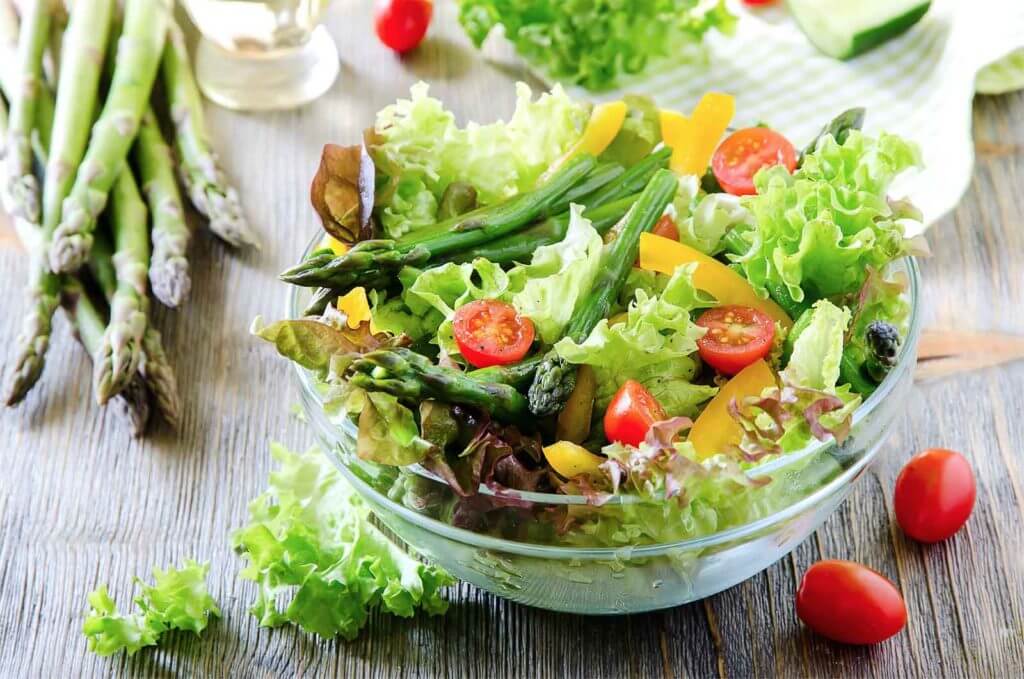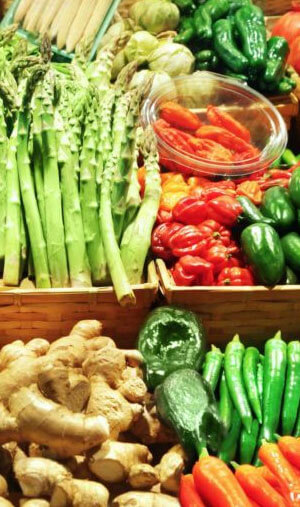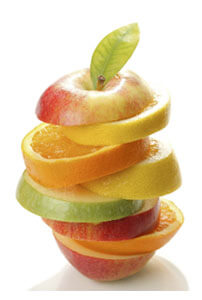 Studies show that diets loaded with vegetables lower your risk of heart disease, diabetes, high blood pressure, high cholesterol, and a variety of other health issues. But the CDC reports that most people eat less than half of the recommended daily servings.
Studies show that diets loaded with vegetables lower your risk of heart disease, diabetes, high blood pressure, high cholesterol, and a variety of other health issues. But the CDC reports that most people eat less than half of the recommended daily servings.
So how do you add more veggies to your life?
Try these tips and tastes, and you’ll not only add more veggies, you’ll feel the benefits of more fiber, antioxidants, vitamins and nutrients!
1. Prep is key.
The easier it is to get to food, the more you will eat.
Rinse, dry and cut-up your vegetables as soon as you bring them home. Or, purchase pre-washed and pre-cut greens and vegetables (found in your produce section). And don’t forget to go for the veggies that don’t need much prep – mini-carrots, grape tomatoes, celery sticks, snap peas.
2. Out in front.
Store veggies at the front of your fridge shelves and drawers in clear containers or bags. That way they’ll be easy to grab for an on-the-go snack, and you’ll be more likely to use them in salads, as sides, and instead of chips for snacks and dips such as hummus, guacamole and salsa.
3. Think outside the dish.
Veggies aren’t just for lunch and dinner! They are also an incredibly healthy way to start your day. Sneak them into a breakfast omelet or scrambled eggs. Heat ½ teaspoon olive oil or ghee in a pan and toss in a couple of eggs; scramble with your choice of sautéed veggies such as mushrooms, peppers and spinach. It only takes about five minutes and you’ve got a nutrient-packed breakfast.
4. Smoothie stars.
A handful of spinach in your morning smoothie is another great way to get more vegetables into your day.
5. Soup’s on.
Soup is one of the best ways to get your vegetables! See my favorite new soup recipe.
 6. Farm to table.
6. Farm to table.
I’ve found that part of the fun of including vegetables in my meals is shopping for them at my local farmers’ markets. Not only do I get to buy the cream of the crop – literally – but there’s also a fun and festive feel among the shoppers and sellers that I look forward to.
Look online for local farmers’ markets in your town. If you’re traveling on vacation this summer, it’s a great excursion and a fun way to get the local flavor.
7. Noodle on it.
If you haven’t tried a spiralizer, you don’t know what you’re missing! A spiralizer is a fast (and fun) way to make “noodles” from zucchini, squash, carrots, and more. Top with sautéed or pureed veggies for a simple, nutritious pasta alternative.
8. Stack ‘em.
It’s easier than you may think to get more veggies into your meals.
Making a sandwich? Stack it with spinach leaves, tomatoes and thinly sliced cucumbers. If you’re a condiment lover looking for healthier alternatives, makeover your mayonnaise by using ripe avocado instead.
Prefer cooked veggies? Try sautéed peppers, cooked chopped broccoli or sliced grilled yellow squash in sandwiches and salads.
9. Spice it up.
You’ll defeat the purpose if you add loads of salt or butter to your vegetables. Instead, experiment cooking with the flavors you already like. If you are a Thai food fan, try cooking your greens with garlic, curry, sesame oil, and a little red pepper.
Like Italian food? Add garlic, black pepper, basil, parsley, and oregano. Feeling the summer time vibe? Add cumin, dill, white pepper, and turmeric. The flavors you already like in your main meals translate great to vegetables.
10. Freezer friendly.
Vegetables that are flash-frozen at their peak actually retain their nutrients and vitamins as well or better than fresh. Some of the best choices include chopped spinach, peas, peppers, and green beans. Keep a bag or two of vegetables in your freezer.
 Hi, I’m Linda. As a National Board-Certified Health and Wellness Coach, my passion is empowering my clients to take control of their relationship to food, their health, and their overall wellbeing. Nothing makes me happier than my clients who have reached their goals and are symptom-free, lighter, and have more energy and confidence than ever before!
Hi, I’m Linda. As a National Board-Certified Health and Wellness Coach, my passion is empowering my clients to take control of their relationship to food, their health, and their overall wellbeing. Nothing makes me happier than my clients who have reached their goals and are symptom-free, lighter, and have more energy and confidence than ever before! 